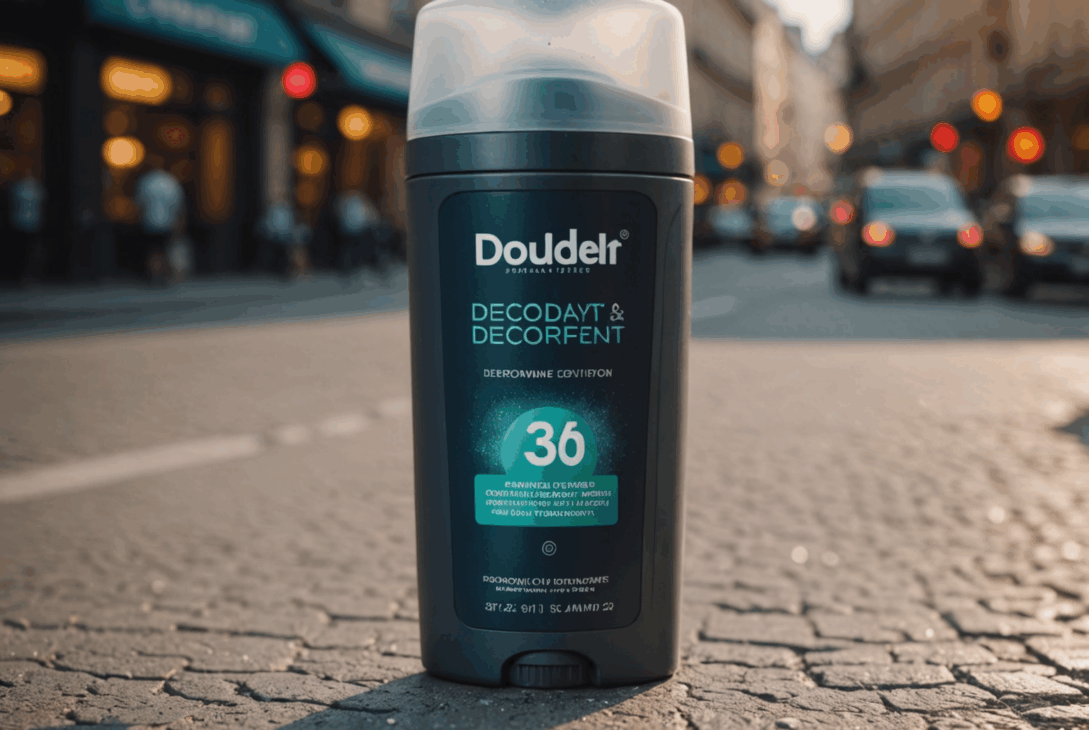You left the house feeling confident, antiperspirant in your armpits, yet after only a few hours at the office you’re afraid to raise your arms. Perhaps you’re one of those who trust the ads that claim “24-hour freshness” is a sure thing. But what is the real truth once the cameras stop rolling and the studio’s glossy models walk out? Let’s uncover the secrets manufacturers would rather keep quiet.
Introduction: The truth about deodorants
Deodorant or antiperspirant ranks among the best-selling cosmetics of all. According to statistics, 94 % of Czech women buy one regularly, yet few know exactly what’s hiding under that shiny packaging. A **deodorant** is meant to neutralize odor, while an **antiperspirant** is designed to reduce sweating itself. Commercials promise unbelievable freshness and luxurious scent, but the real story plays out beneath our skin—and it’s far more suspenseful than we expect.
How deodorants actually work
Perspiration is a natural physiological process governed by our thermoregulation. Sweat is 90 % water with a small amount of salts and proteins. Odor appears only when bacteria on the skin get involved. And that’s where deodorants step in:
- Antibacterial agents—most often alcohol, triclosan, or phenoxyethanol. They limit bacterial growth and thus delay odor.
- Fragrances—essential oils and synthetic scents mask any odor but can also irritate sensitive skin.
Antiperspirants go further. They contain **aluminum salts** (aluminum chlorohydrate or aluminum chloride) that react with moisture in damp armpits and form a “gel-like” plug at the opening of sweat glands. The result? Less sweat on the surface and— theoretically—drier shirts.
Myths and reality
Many half-truths and scare stories swirl around deodorants. Which are worth busting?
- “Aluminum causes breast cancer.”—There is still no scientific consensus proving a direct link. Some studies suggest a correlation with disruption of hormone receptors, but most experts acknowledge the evidence is inconclusive. Still, caution is wise, especially if your skin is sensitive or broken.
- “Sweating is unattractive, so we must stop it.”—Sweating is essential for cooling the body and flushing out toxins. Completely blocking sweat glands can lead to overheating and rashes, especially during sports or in hot weather.
- “Natural deodorants don’t work.”—Modern formulas with blends of mineral salts, baking soda, and essential oils can neutralize odor surprisingly well. They do require more frequent application and sometimes a “detox” period from conventional products.
Personal experience and testing
To avoid staying only in theory, we tested seven products—from classic drugstore sprays to hand-made cream deodorants from farmers’ markets. Criteria? Endurance during a regular office day, athletic load, and a nerve-racking presentation.
- Drugstore antiperspirant with aluminum—Lasted 10 h. Scent endured, shirt stayed dry, but skin stung after shaving.
- Deo with alcohol and perfume—Lasted 4 h. Pleasant freshness faded quickly; needed a respray.
- Natural baking-soda cream—Lasted 8 h. Surprisingly held up even in a yoga class, but finger application isn’t for everyone.
- Mineral “crystal”—Lasted 6 h. Slightly less sweating, neutral smell, but must be applied to damp skin.
The test showed that **there is no universal winner**. Every body reacts differently to ingredients and scents. The key is to listen to your skin and watch for signs of irritation.
Alternatives and natural options
If you want to avoid chemicals altogether, you don’t have to give up social acceptability. Here are the most popular natural routes:
- Baking soda and coconut oil—Soda neutralizes odor, coconut fights bacteria. The mix may sting after shaving.
- Hydroxyapatite and zinc—Modern “scientific” nature: the mineral binds fatty acids, eliminating odor.
- Essential oils (tea tree, lavender, sage)—Natural antibacterial effects, but beware of the phototoxicity of citrus oils.
- Activated charcoal—Absorbs moisture and odors, commonly in creams or roll-ons.
- Botulinum toxin—Yes, Botox! A medical procedure blocks nerve signals to sweat glands for up to six months. Effective but expensive and certainly not “natural.”
Natural alternatives often require a bit of DIY spirit and willingness to experiment. The advantage is knowing exactly what you’re putting on your skin and minimizing the risk of hormone disruptors.
Conclusion: What to choose for yourself?
Ads can magically compress reality into 30 seconds of blissful freshness, but everyday life brings varied situations—from meetings to marathons. **If you want maximum dryness and don’t mind aluminum,** an antiperspirant will remain your first choice. If you prefer gentleness and are willing to reapply during the day, **reach for a natural option**. In winter you might get by with a light fragrance; in summer a stronger mineral blend—or Botox if you suffer from hyperhidrosis—will pay off.
Don’t ignore your body’s signals: itching, redness, or pain indicate the formula isn’t right. Try several products and don’t be afraid to mix and match—say, antiperspirant for sports and a natural cream for the office. In the fight for confidence it’s not about silencing sweat at all costs, but **finding a balance between comfort, health, and personal conviction**. Because the only thing you should truly take from the commercials is the courage to raise your arms—preferably with a smile.


